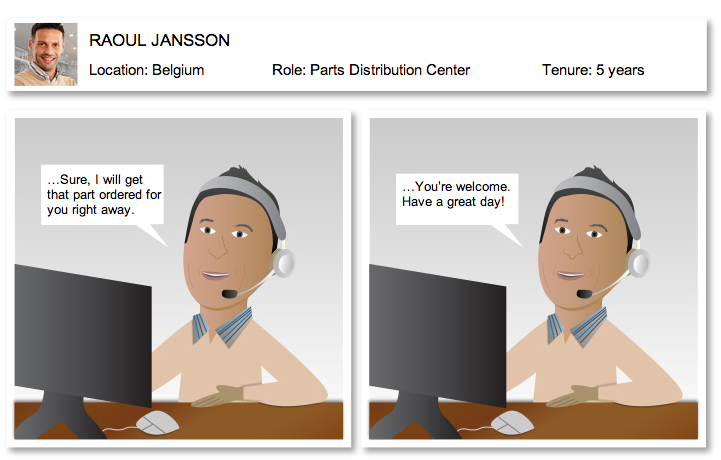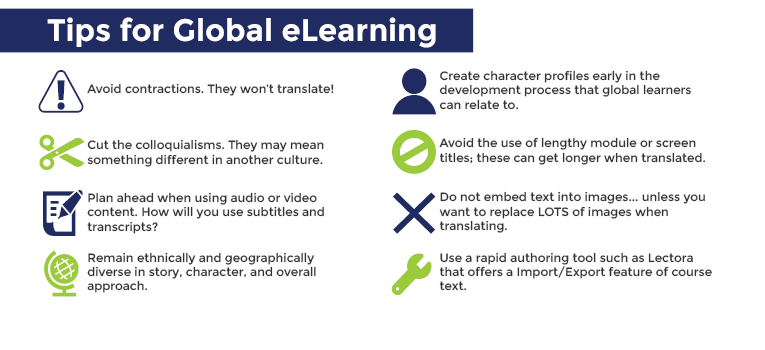
Want life to keep you on your toes? Try deploying eLearning to a global audience. Good ideas have to be great ones, and even the best-laid project work plan can be torn asunder as project teams grow and decision makers multiply. We’ve been deploying global eLearning curriculums with our clients for years, and that experience has taught us that, well, every project is truly unique. One size really does not fit all.
…But would that last sentence have worked in a global course? “One size does not fit all” is a phrase we use a great deal in the US, and its meaning seems universal. But how does that translate into Chinese? I’m not entirely sure, but if I was a learning designer developing eLearning for a global audience, I would need to check on that one.
Before you start a large curriculum design project (or even a single eLearning course) for a global audience, make sure you can answer these questions:
How will we get consensus from decision makers around the globe?
If you are lucky, all of the key stakeholders will be located in the same country. More than likely this is not the case. Your company’s stakeholders all want an opportunity to have buy-in and support each decision… but this can add months in development time. It is important to identify who owns the decision and who makes the final decision. If multiple global groups will meet with the vendor at different times, agree to break decisions into parts where everyone decides on their own piece. Otherwise, your group must try to make key decisions outside of meetings with your vendor.
How Will Content From Disparate Sources Be Collected?
Your organization is huge, and the vendor will likely be hunting around the globe to speak with SMEs, conduct focus groups and gather the necessary information. With so much information to gather, you’ll need to identify the key pieces you can provide to get the projected started, then agree on individual pieces the vendor can deliver while content is still being finalized on your end.
How will we make the solution feel universal?
In an article published in April 2013, we said that eLearning illustrations can make learners feel like a course is “everywhere and nowhere at the same time.” We’ve found that even the most “serious minded” learners respond positively to graphical illustrations instead of photography. It also avoids the problem of images that are too realistic. The laboratory in Iowa may not look the same as the one in Budapest, and illustrations can reduce this problem significantly.
Here is an illustrated example from a course we created for Cummins, Inc:

How will we keep expensive translations to a minimum?
If budget is an issue, try to think carefully about video and audio. How can you use video and audio creatively and add interactivity to the course without creating re-work? Obviously, avoiding audio of people speaking is essential, assuming you do not want to rely on subtitles.
How will the meaning of our courses translate into other languages?
The colloquialisms and vernacular may mean something entirely different in another country. They might even be offensive in another country. Vendors must work carefully with their clients, and do their own research, to determine how various language choices will work.
More tips for global elearning
For more thoughts on how to make your global eLearning project a success, have a look at the graphic below:




Great article and reminder of the important key considerations! Take it from someone who has learned most of these the hard way 🙂 Thanks for sharing.
Thanks for the article –the tips are very practical. We too have collated some ways to make e-learning more effective – Hope this adds on to the learning! http://www.gc-solutions.net/blog/effective-e-learning-how-to-take-the-boring-out-of-e-learning/
I enjoyed reading the practical and useful tips in this article. We also make sure that we test the content with different global audiences to test bandwidth constraints and check for cultural appropriateness.